Discover the Colorful Hummingbirds of Costa Rica
Updated: Apr. 12, 2024
With more than 50 species found in this small country, the hummingbirds of Costa Rica put on an amazing show. Here are eight to add to your international bird bucket list.
On This Page
Costa Rica Hummingbirds You Should Know
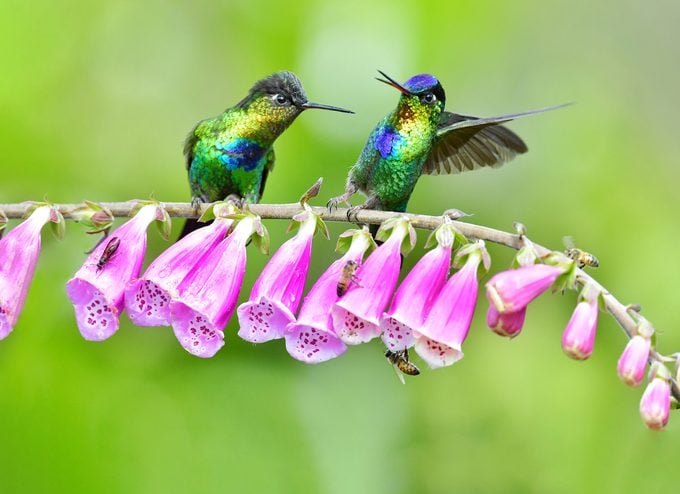
With their vibrant colors, hummingbirds seem as if they belong in the tropics—and they do. Fewer than 20 species of these little gems can be found found regularly in all of the United States and Canada. By contrast, the tiny, beautiful nation of Costa Rica—less than half the size of Ohio—hosts more than 50 hummingbird species. Here are a few favorites among the many types of hummingbirds that call Costa Rica home.
Volcano Hummingbird
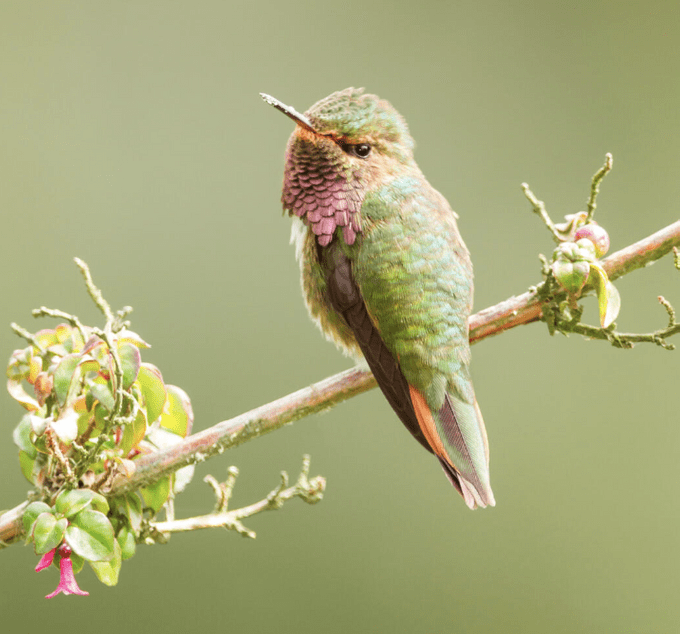
Related to the rufous hummingbird of North America, the volcano hummingbird is a very small species living only in Costa Rica and a small portion of western Panama. It’s a common resident in the high mountains, zipping about in open meadows and the edges of scrubby forests.
Adult males have bright iridescent colors on the throat. The exact color varies on different mountaintops. It varies from reddish to purple, blue-gray or green. On females, the throat is white with dark spots.
Fiery-throated Hummingbird
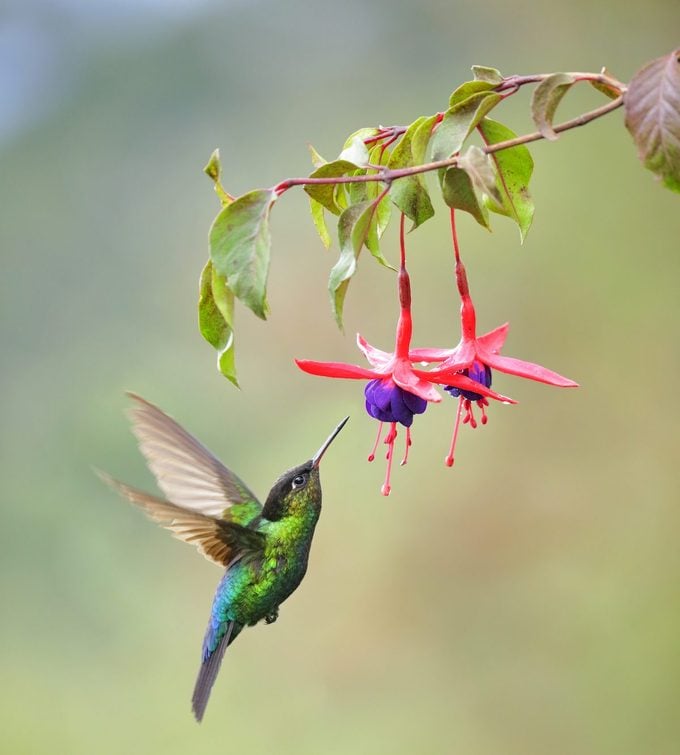
When seen in the shadows, it can look like the plainest of hummingbirds, just a dull green all over. But let the light hit it just right, and the fiery-throated truly lives up to its name. The throat feathers flash a bold mix of red, gold and bronze, with dashes of blue and purple on the head, chest and tail.
Fiery-throated hummingbirds are fairly common in mountainous forests that run the length of Costa Rica. These fliers aren’t seen anywhere else except parts of western Panama.
Psst—discover 5 secret hummingbird travel sites to visit.
Long-billed Hermit
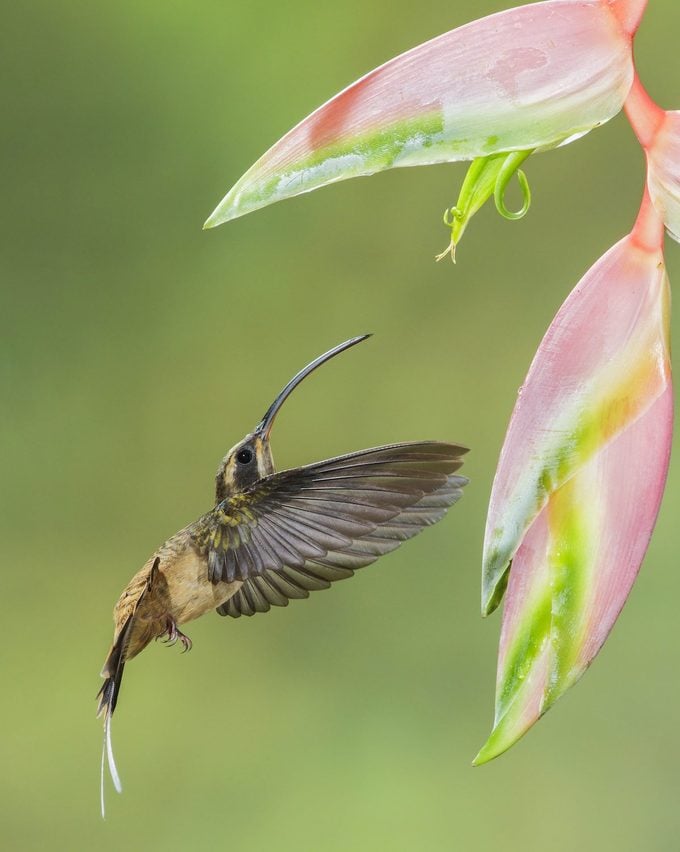
The hermits make up a group of medium-sized to large hummingbirds that live in the shaded forest interior. Most of them have long, curved bills and elongated central tail feathers. Several kinds live in Costa Rica, but the long-billed hermit is one of the most widespread, found in tropical forests throughout the lower elevations of the country.
Long-billed hermits can be tricky to observe. They move about inside the forest, visiting isolated flowers. Often they’re noticed first by their sharp, high-pitched call note as they zoom past, trailing their long white central tail feathers.
Purple-crowned Fairy
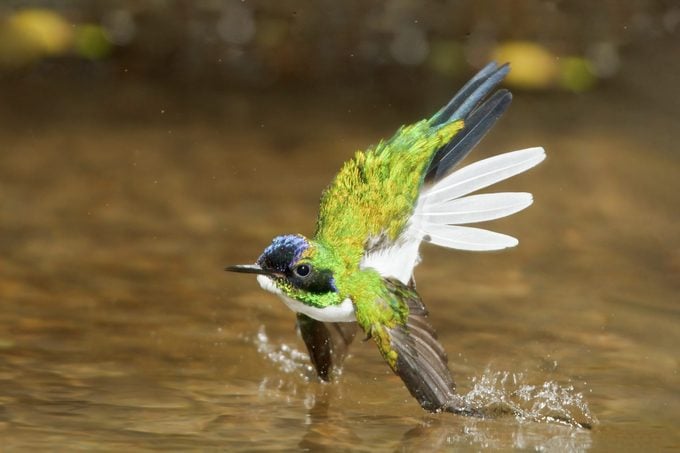
This large hummingbird often stays high, hovering around flowers in the mid to upper levels of trees at tropical forests’ edges in the valleys and lowlands. Fortunately it’s still easy to spot because it often spreads and flips its long tail while hovering, flashing the white outer tail feathers.
In addition to its tail pattern, identify this bird by the contrast between its bright white underparts and green back. The purple crown of the male is often hard to see.
White-crested Coquette
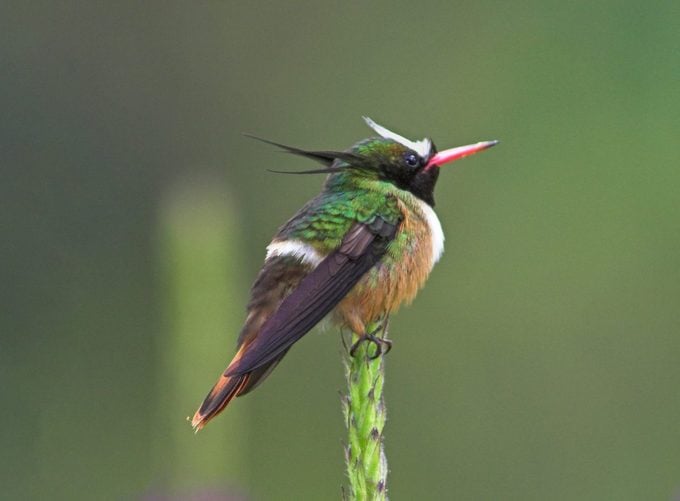
One of the most sought-after hummingbirds in Costa Rica, birders commonly spot the tiny white-crested coquette in the country’s southwestern lowlands. Green on the back and washed with orange on the belly, both males and females have a white band across the lower back. In addition, the male has narrow green plumes at the side of the throat and a perky white crest.
A former name for this species, “adorable coquette,” seems totally appropriate.
Meet the calliope hummingbird: the smallest bird in the U.S.
Rufous-tailed Hummingbird
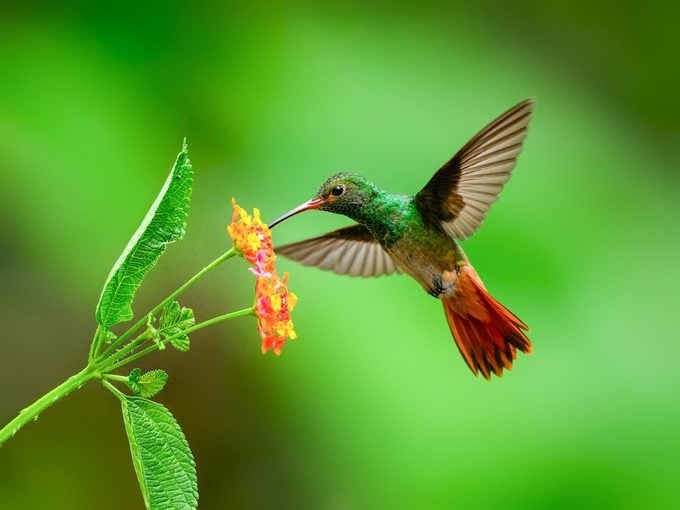
Probably the most common hummingbird in Costa Rica, the rufous-tailed is found almost everywhere at low to middle elevations. It thrives in dry scrub in the northwestern part of the country, in the edges of wet tropical forests, along roadsides, in suburban gardens, and even in the middle of the capital city of San Jose.
Aside from their bright reddish brown tails, adults are mostly bright pale green with red bills. The male often sings from a favorite high perch, giving a series of thin, high-pitched notes.
Snowcap
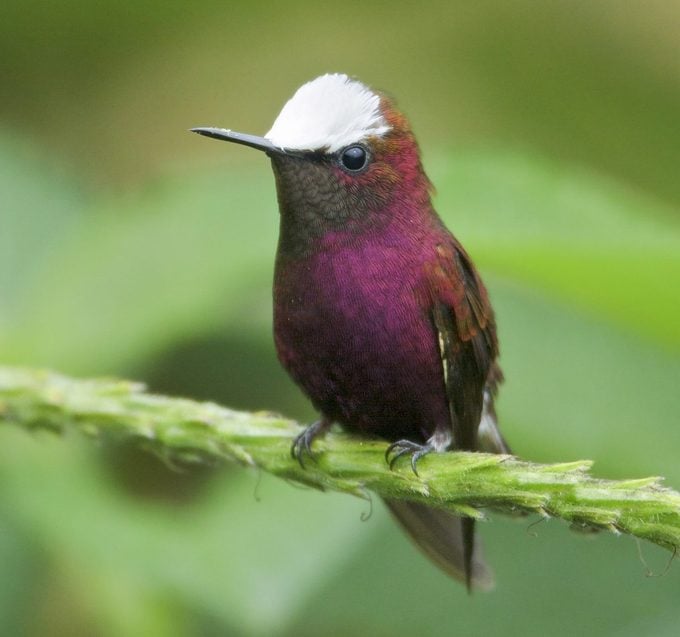
A unique little gem, the male snowcap is mostly a dark reddish or bronzy purple but with a bright white cap and white outer tail feathers. The female, with a green back and white underparts like many other hummingbirds, is less distinctive.
Snowcaps are found in four Central American countries, from Honduras to Panama. But they are seen most regularly in the foothills of Costa Rica.
Up to six male snowcaps may perch on exposed twigs at the edge of a clearing and sing a soft, rambling song to attract the attention of females.
Learn how to identify a broad-billed hummingbird.
Violet Sabrewing
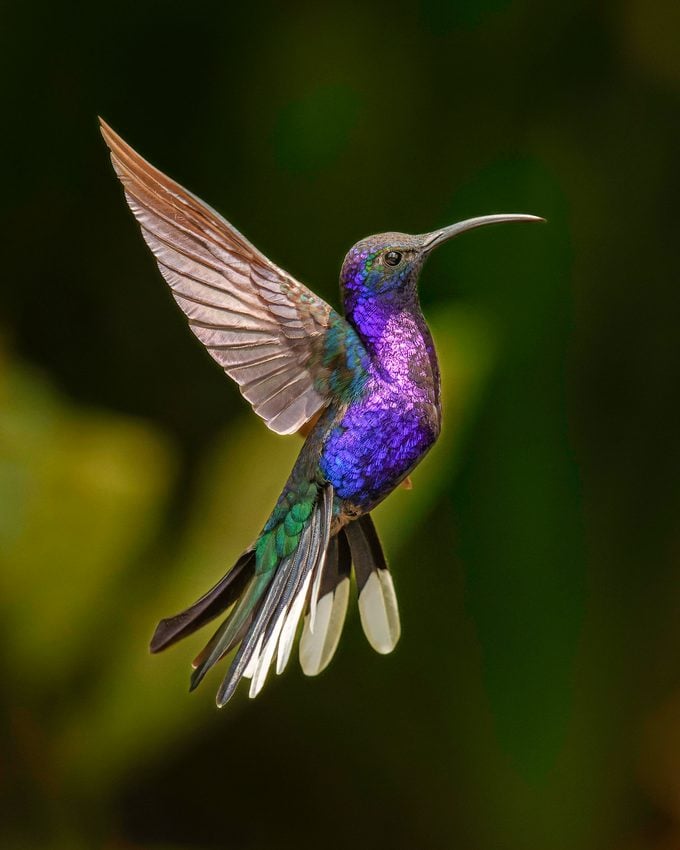
The male violet sabrewing is unmistakable: a large, dark hummingbird with mostly deep purple on the head and chest, green on the back and wings, long curved bill, and big white patches in the tail. The female is a little plainer, with purple only on the throat. But she has the same bill shape and bold white tail spots.
Violet sabrewings live in the foothills and mountains in Costa Rica, ranging through the understory and mid-levels of the forest.
What makes hummingbird feathers so shimmery?
Go Birding to See Costa Rica Hummingbirds
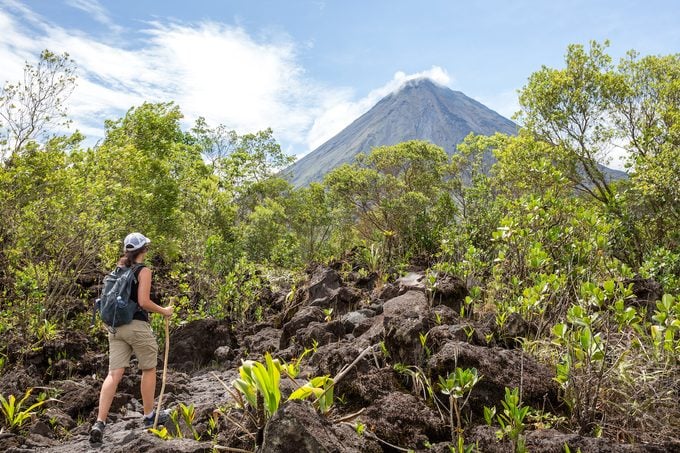
Although multiple species of hummingbirds can be found almost anywhere in Costa Rica, no single spot has them all. Each kind has their own habitat preferences. Some thrive in lowlands, some live in mountainous mid-level areas, and some are found mainly near higher peaks. To see a good variety, plan to go birding at different elevations.
Fortunately, in this small country, it’s easy to travel from low valleys to higher slopes in a short time. Costa Rica has many tourist lodges that cater to bird-watchers and naturalists. Many of these locations have gardens to attract hummingbirds. When planning a visit, ask ahead about these opportunities and facilities.
- Head to the mountains and stay at Paraiso Quetzal Lodge, a fantastic place to relax and see the many high-elevation species of hummingbirds found in Costa Rica. You may spot a fiery-throated hummingbird or lesser violetear.
- Put your eyes to the skies at Rancho Naturalista, a lodge located in the lush rainforest. The snowcap, a tiny purple hummingbird with a white cap on its head, stops by regularly.
- Grab a bite to eat and keep your eyes open for hummingbirds at a delightful roadside diner, Galeria de Colibries y Restaurant Cinchona. The back patio offers the best seats in the house. Bird-watch at the Virgen del Socorro canyon near the restaurant.
Why Trust Us
For nearly 30 years, Birds & Blooms, a Trusted Media Brand, has been inspiring readers to have a lifelong love of birding, gardening and nature. We are the #1 bird and garden magazine in North America and a trusted online resource for over 15 million outdoor enthusiasts annually. Our library of thousands of informative articles and how-tos has been written by trusted journalists and fact-checked by bird and garden experts for accuracy. In addition to our staff of experienced gardeners and bird-watchers, we hire individuals who have years of education and hands-on experience with birding, bird feeding, gardening, butterflies, bugs and more. Learn more about Birds & Blooms, our field editor program, and our submission guidelines.

